As the chairman of Nestlé complains of 'brand hyperventilation', Glynn Davis asks if brand stretching has gone too far
When Nestlé's chairman and chief executive, Peter Brabeck-Letmathe, accused Chris White, the former boss of its Nestlé Rowntree business in the UK of 'brand hyperventilation' recently, it raised some interesting questions about the current state of NPD.
Here was one of the most powerful men in food and drink bemoaning the way new variants, brand extensions and sub-brands had usurped genuine brand innovation in his own company. The inference was clear: true innovation had made way for a need to play safe - forcing manufacturers to stretch once-iconic brands to breaking point.
The Nestlé subsidiary has certainly gone to town with the Kit Kat brand since it launched Kit Kat ChunKy, back in 1999. As well as Kubes, we've seen Kit Kat variants in Lime, Blood Orange and Peanut Butter and last month, the ChunKy Peanut Butter bar.
However, though ChunKy continues to fare well, Kubes has been axed. Graham Walker, sales communications manager at Nestlé Rowntree, admits: "We are reducing complexity, focusing on fewer big commercial activities and emphasising execution and control. New Nestlé Rowntree product launches will continue, but at a much slower rate."
If we have entered an era of brand hyperventilation, the Nestlé subsidiary has certainly been one of the main culprits, believes David Taylor, founder of Brandgym and author of 'Brand Stretch - Why 1 in 2 extensions fail and how to beat the odds'.
But, he adds, it is no surprise that there has been a shift away from launching new brands to leveraging existing ones. Brand consolidation is one factor at play. He points to the likes of Unilever UK reducing its brand portfolio from 1,700 to 400. "By definition, they will have to stretch them further."
Another is consumer demand for novelty, he says. This is why Unilever, the maker of Domestos, will launch a pink variant, say.
"Brands were initially created to help customers navigate; now each brand wants to be everywhere," says Taylor, citing the many new Kit Kat formats and price premiums, which he feels have fragmented the brand. There is always a danger that the sub-brand or extension will undermine the core values of the mother brand, he adds: "Kubes was a flop because the whole idea of Kit Kat was about breaking the finger - so they ran the risk of brand damage."
In contrast he compliments Walkers for its success in creating "excuses for conversation and an urgency to purchase" through launches of limited-edition flavour ranges and innovations that reinforce the brand.
Carol Garbutt, marketing director for Walkers, says that the reason for the increased amount of brand stretching is that consumers are demanding it.
"What did some people want? Premium upmarket crisps - so we created Sensations. And what did mums want? Healthier crisps for kids - so we introduced Potato Heads. It's as simple as that. If it's too complex, it's not the right thing," she says.
The problem with some stretches, says Michael Curry, director of strategy for consumer packaged goods at branding consultancy Interbrand, is that brand owners don't always find out exactly what the customer wants before embarking on a new launch instead falling into "the bad habit of innovating for innovation's sake".
He says: "You can fall into a cycle of extending lines because it's easy - but the market to support them may not exist. Lots of products appear and disappear as a result of the 'we-can-do-it' mentality."
Producing new variants and flavours is not a strategy Curry would advocate. Instead, he recommends that brand owners look for "unmet needs of consumers in other category areas" - a concept that he describes as adjacencies.
He cites Unilever's Dove as successfully moving from its "functional" heritage to incorporate a health and beauty element into its brand: "It chose to get out of wash-up soap and go for the health and beauty market, which is stretching the brand in a strategic way versus a variant way."
On the other hand, he believes Evian Water "possibly stretched too far" with its cosmetics range, questioning whether consumers would buy such products out of loyalty to the Evian brand name. If not, Evian would need to produce a superior-quality product to beat rivals.
Premier Foods has managed to meet this challenge with the launch of Branston Beans. This adjacency has proved very popular, offering real competition to established rival Heinz Beanz, the cost-cutting on which arguably enabled Branston to enter the market in the first place.
Although Walkers has launched product adjacencies - including dips for its Doritos range, which Garbutt says made logical sense - the question of whether to launch a totally new brand such as Sensations or change a core brand is always a dilemma not least because of the very different costs involved.
Earlier this year, it took the latter route with the launch of healthier lower-fat and lower-salt Walkers crisps made with Sunseed oil. The company was undeterred by the £6m annual production cost. She reasons: "It could have been a piece of activity that we did more cheaply away from the main brand, but it was such a mass need that we did it as a relaunch of the main brand."
Taste is the other priority alongside health, she says. If new flavours are popular, like Marmite, they become permanent fixtures.
According to Jeremy Hamer, chairman of cake manufacturer Glisten, the crucial issue of taste can often be overlooked with new variant and adjacency launches. "Sometimes a brand is about 'mouthfeel' - if you lose that, you lose the brand. Human beings are remarkably clever in determining the things they associate with a brand."
While it is relatively easy to create ice cream variants of confectionery brands - because they are simply the same taste at a different temperature - Hamer suggests that it is much more difficult to replicate them in cake form. As reproducing the crunch of a Kit Kat or Maltesers in a cake can be difficult, manufacturers may risk failure by leaving out vital elements that consumers expect from those brands.
While there appears to have been a multitude of such cake launches, Sam Grant, from the marketing department at Manor Bakeries, which produces cakes under licence for Cadbury brands, says that the company must undertake a large amount of research before Cadbury will give the go-ahead for a new product.
"We research what consumers want in a cake. Cadbury's mantra is to have this consumer evidence. And it must fit in with its business strategy."
As well as facing a high-failure risk, such launches also threaten to fragment marketing departments, whose members are likely to prefer working on exciting new product activity rather than the key issue of growing the sales of the core product, says Brandgym's Taylor.
Without this focus, there would have been no development of Mini Pringles or upside-down bottles of Heinz Tomato Ketchup, which have added significant incremental sales for both brands, he says.
However, these products are in some ways the exceptions that prove the rule. Hyperventilation looks set to continue for as long as consumers demand a combination of novelty and familiarity.
The challenge for manufacturers is to ensure that they don't go so far with new variants and sub-brands that true innovation is stifled.
BRAND STRETCHING: WHEN NPD PAYS OFF, AND WHEN IT DOESN'T
JARGON BUSTER
Adjacency - takes the brand into related product areas or categories, eg: Snickers ice cream
Sub-brand -a new subsidiary brand, eg: Kit Kat Kubes
When Nestlé's chairman and chief executive, Peter Brabeck-Letmathe, accused Chris White, the former boss of its Nestlé Rowntree business in the UK of 'brand hyperventilation' recently, it raised some interesting questions about the current state of NPD.
Here was one of the most powerful men in food and drink bemoaning the way new variants, brand extensions and sub-brands had usurped genuine brand innovation in his own company. The inference was clear: true innovation had made way for a need to play safe - forcing manufacturers to stretch once-iconic brands to breaking point.
The Nestlé subsidiary has certainly gone to town with the Kit Kat brand since it launched Kit Kat ChunKy, back in 1999. As well as Kubes, we've seen Kit Kat variants in Lime, Blood Orange and Peanut Butter and last month, the ChunKy Peanut Butter bar.
However, though ChunKy continues to fare well, Kubes has been axed. Graham Walker, sales communications manager at Nestlé Rowntree, admits: "We are reducing complexity, focusing on fewer big commercial activities and emphasising execution and control. New Nestlé Rowntree product launches will continue, but at a much slower rate."
If we have entered an era of brand hyperventilation, the Nestlé subsidiary has certainly been one of the main culprits, believes David Taylor, founder of Brandgym and author of 'Brand Stretch - Why 1 in 2 extensions fail and how to beat the odds'.
But, he adds, it is no surprise that there has been a shift away from launching new brands to leveraging existing ones. Brand consolidation is one factor at play. He points to the likes of Unilever UK reducing its brand portfolio from 1,700 to 400. "By definition, they will have to stretch them further."
Another is consumer demand for novelty, he says. This is why Unilever, the maker of Domestos, will launch a pink variant, say.
"Brands were initially created to help customers navigate; now each brand wants to be everywhere," says Taylor, citing the many new Kit Kat formats and price premiums, which he feels have fragmented the brand. There is always a danger that the sub-brand or extension will undermine the core values of the mother brand, he adds: "Kubes was a flop because the whole idea of Kit Kat was about breaking the finger - so they ran the risk of brand damage."
In contrast he compliments Walkers for its success in creating "excuses for conversation and an urgency to purchase" through launches of limited-edition flavour ranges and innovations that reinforce the brand.
Carol Garbutt, marketing director for Walkers, says that the reason for the increased amount of brand stretching is that consumers are demanding it.
"What did some people want? Premium upmarket crisps - so we created Sensations. And what did mums want? Healthier crisps for kids - so we introduced Potato Heads. It's as simple as that. If it's too complex, it's not the right thing," she says.
The problem with some stretches, says Michael Curry, director of strategy for consumer packaged goods at branding consultancy Interbrand, is that brand owners don't always find out exactly what the customer wants before embarking on a new launch instead falling into "the bad habit of innovating for innovation's sake".
He says: "You can fall into a cycle of extending lines because it's easy - but the market to support them may not exist. Lots of products appear and disappear as a result of the 'we-can-do-it' mentality."
Producing new variants and flavours is not a strategy Curry would advocate. Instead, he recommends that brand owners look for "unmet needs of consumers in other category areas" - a concept that he describes as adjacencies.
He cites Unilever's Dove as successfully moving from its "functional" heritage to incorporate a health and beauty element into its brand: "It chose to get out of wash-up soap and go for the health and beauty market, which is stretching the brand in a strategic way versus a variant way."
On the other hand, he believes Evian Water "possibly stretched too far" with its cosmetics range, questioning whether consumers would buy such products out of loyalty to the Evian brand name. If not, Evian would need to produce a superior-quality product to beat rivals.
Premier Foods has managed to meet this challenge with the launch of Branston Beans. This adjacency has proved very popular, offering real competition to established rival Heinz Beanz, the cost-cutting on which arguably enabled Branston to enter the market in the first place.
Although Walkers has launched product adjacencies - including dips for its Doritos range, which Garbutt says made logical sense - the question of whether to launch a totally new brand such as Sensations or change a core brand is always a dilemma not least because of the very different costs involved.
Earlier this year, it took the latter route with the launch of healthier lower-fat and lower-salt Walkers crisps made with Sunseed oil. The company was undeterred by the £6m annual production cost. She reasons: "It could have been a piece of activity that we did more cheaply away from the main brand, but it was such a mass need that we did it as a relaunch of the main brand."
Taste is the other priority alongside health, she says. If new flavours are popular, like Marmite, they become permanent fixtures.
According to Jeremy Hamer, chairman of cake manufacturer Glisten, the crucial issue of taste can often be overlooked with new variant and adjacency launches. "Sometimes a brand is about 'mouthfeel' - if you lose that, you lose the brand. Human beings are remarkably clever in determining the things they associate with a brand."
While it is relatively easy to create ice cream variants of confectionery brands - because they are simply the same taste at a different temperature - Hamer suggests that it is much more difficult to replicate them in cake form. As reproducing the crunch of a Kit Kat or Maltesers in a cake can be difficult, manufacturers may risk failure by leaving out vital elements that consumers expect from those brands.
While there appears to have been a multitude of such cake launches, Sam Grant, from the marketing department at Manor Bakeries, which produces cakes under licence for Cadbury brands, says that the company must undertake a large amount of research before Cadbury will give the go-ahead for a new product.
"We research what consumers want in a cake. Cadbury's mantra is to have this consumer evidence. And it must fit in with its business strategy."
As well as facing a high-failure risk, such launches also threaten to fragment marketing departments, whose members are likely to prefer working on exciting new product activity rather than the key issue of growing the sales of the core product, says Brandgym's Taylor.
Without this focus, there would have been no development of Mini Pringles or upside-down bottles of Heinz Tomato Ketchup, which have added significant incremental sales for both brands, he says.
However, these products are in some ways the exceptions that prove the rule. Hyperventilation looks set to continue for as long as consumers demand a combination of novelty and familiarity.
The challenge for manufacturers is to ensure that they don't go so far with new variants and sub-brands that true innovation is stifled.
BRAND STRETCHING: WHEN NPD PAYS OFF, AND WHEN IT DOESN'T
JARGON BUSTER
Adjacency - takes the brand into related product areas or categories, eg: Snickers ice cream
Sub-brand -a new subsidiary brand, eg: Kit Kat Kubes

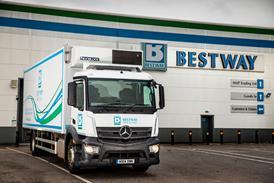
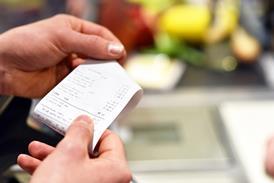
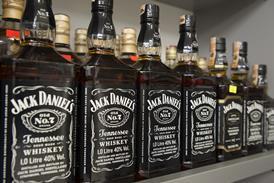
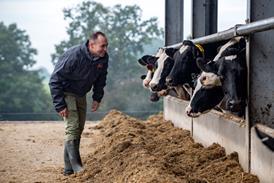
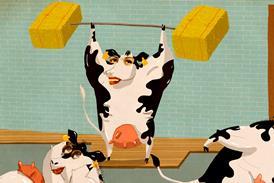







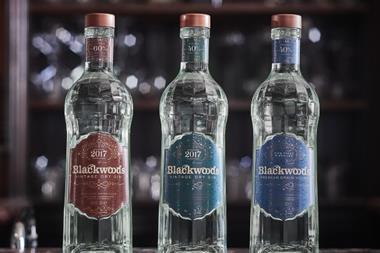
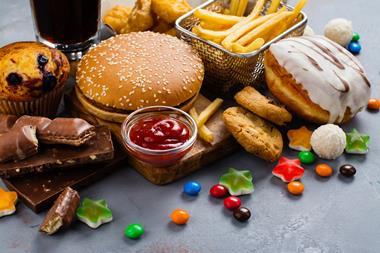
No comments yet